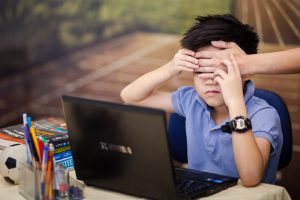Why Minecraft might just be the game for your children
Minecraft is a video game built on blocks (also called textured cubes). The game does not offer gamers specific quests, exhilarating showdowns or outstanding graphics; the core gameplay revolves around breaking and placing blocks. Yet, it has managed to attract millions of players – since Minecraft’s release in 2009, over 20 million copies have been sold, including 93,000 sign-ups in a 24-hour peak (1). Moreover, parents and experts have attested to the game’s extensive benefits; schools have begun to use it in educational curriculum. Just what is so special about this game?
- Every new player is thrown into an unknown world, where possibilities are infinite as is the space. There are no instructions given, except for a few general objectives. This flexibility engages players to explore and decide their own course of action. The game also has challenges that hone players’ problem-solving skills.
- Players only have building blocks at their disposal. Out of these, they can construct all kinds of infrastructure – bungalows, castles, recreation facilities, even roller coasters – as well as fashion their own armour and weapons. This requires and develops creativity, especially since the player can build just about anything within his imagination. Players have also re-created real buildings, like this masterpiece by a former student of NUS High School. Called the “digital version of Lego” (2), Minecraft is indeed a great game for future architects and artists!

Taken from: http://thatredmoon.wordpress.com/2012/11/15/wip-nus-high-school-remade-in-minecraft/
- Minecraft also has an option for players to strategise, plan and interact with one another. Necessary precautions must definitely be taken to ensure such social frameworks are safe and do not expose children to cyber predators. Schools are even leveraging on the game to inculcate teamwork and interpersonal skills as well as teach knowledge. From the New York Times:Around the world, Minecraft is being used to educate children on everything from science to city planning to speaking a new language, said Joel Levin, co-founder and education director at the company TeacherGaming. TeacherGaming runs MinecraftEdu, which is intended to help teachers use the game with students.”“A history teacher in Australia set up “quest missions” where students can wander through and explore ancient worlds. An English-language teacher in Denmark told children they could play Minecraft collectively in the classroom but with one caveat: they were allowed to communicate both orally and through text only in English. A science teacher in California has set up experiments in Minecraft to teach students about gravity.” (3)
Nevertheless, it is possible children may become addicted to Minecraft, like all other video games taken to the extreme. Parents must therefore take responsibility in setting rules for online gaming, in order to maximise the benefits of this game.
[1] http://www.2machines.com/articles/183040.html
[2] Quote by Eric Klopfer, a professor and the director of the Massachusetts Institute of Technology’s Scheller Teacher Education Program
http://www.2machines.com/articles/183040.html
http://deangroom.wordpress.com/2013/02/03/8-ways-minecraft-works-on-your-brain/





